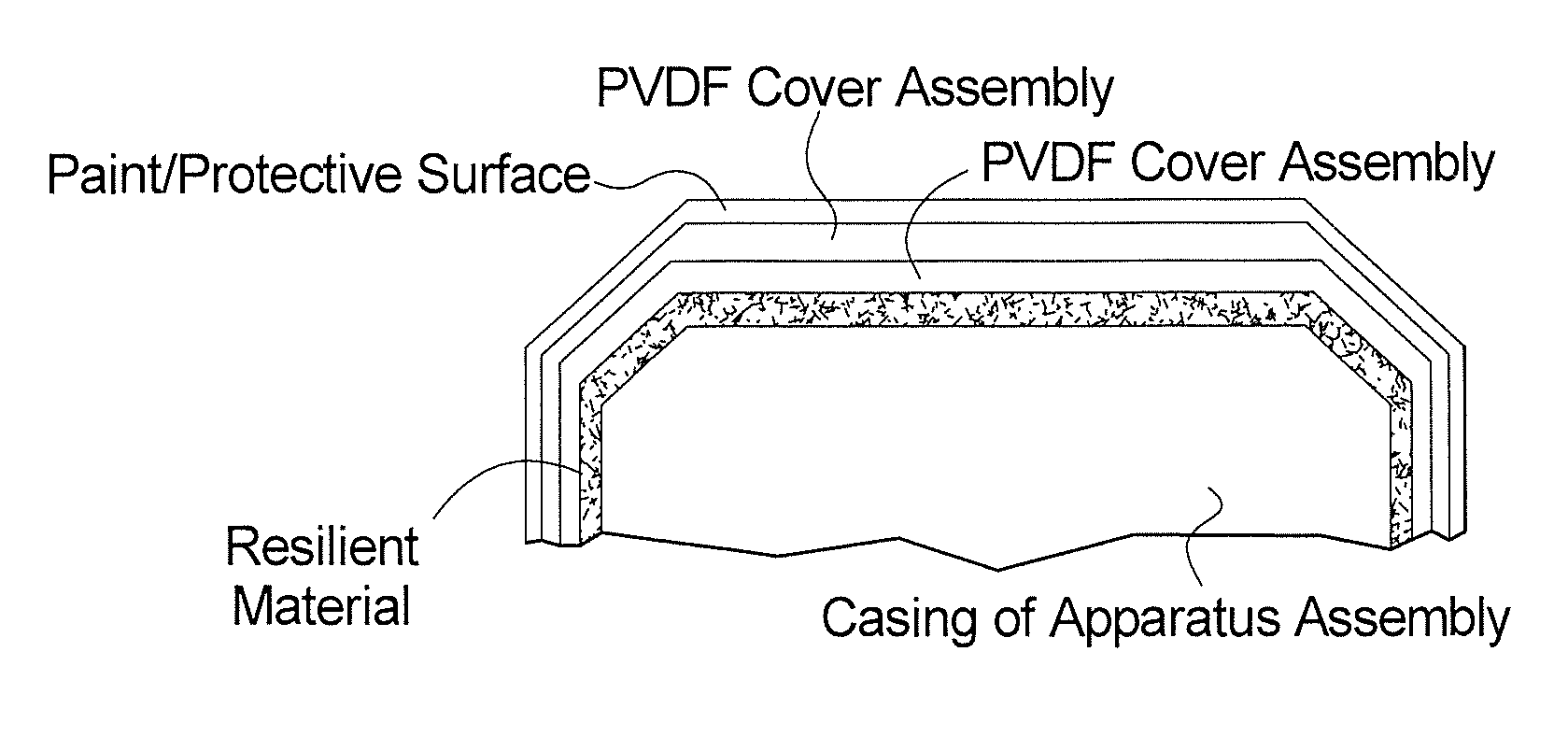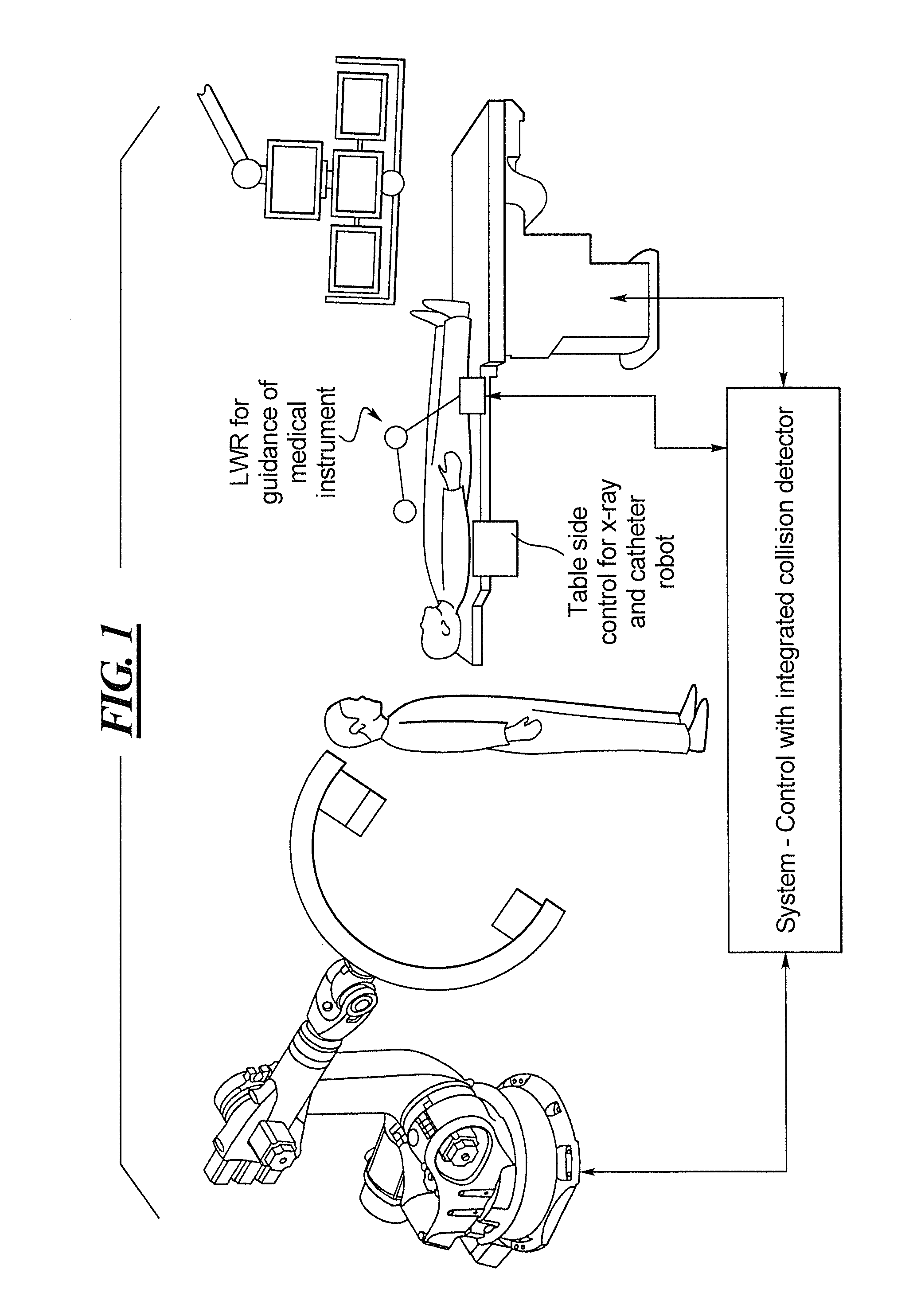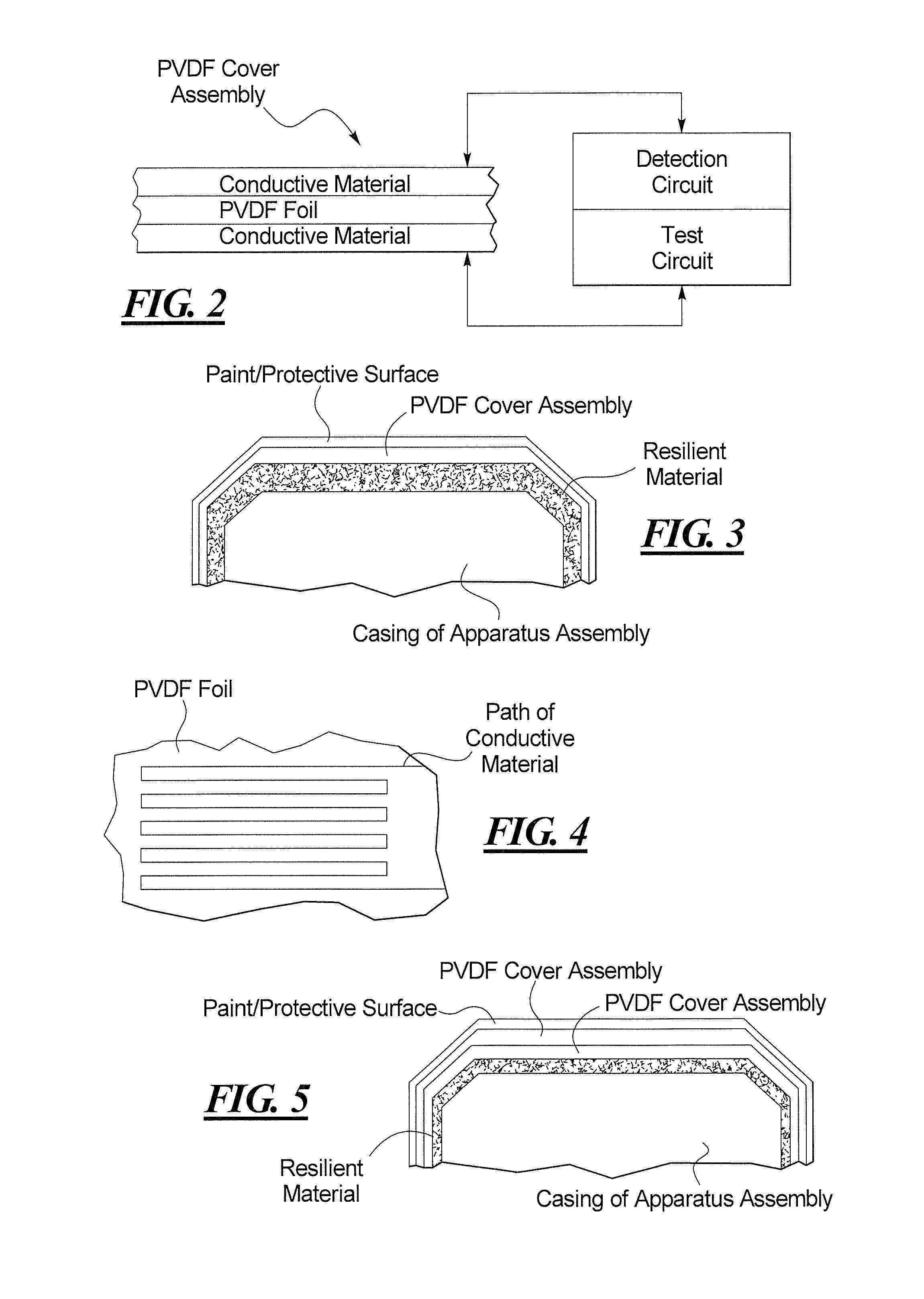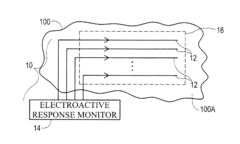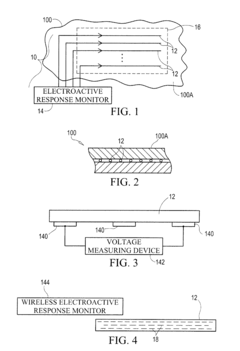PVDF in Structural Health Monitoring: Ensuring Engineering Safety
PVDF in SHM: Background and Objectives
Polyvinylidene fluoride (PVDF) has emerged as a pivotal material in the field of Structural Health Monitoring (SHM), revolutionizing the way we ensure engineering safety. The development of PVDF-based sensors for SHM applications traces back to the early 1990s, when researchers first recognized its potential for detecting structural deformations and vibrations. Since then, PVDF has undergone significant advancements, evolving from simple piezoelectric films to sophisticated smart materials capable of real-time monitoring and data transmission.
The primary objective of incorporating PVDF in SHM is to enhance the safety, reliability, and longevity of critical infrastructure. By leveraging PVDF's unique properties, engineers aim to develop highly sensitive, durable, and cost-effective monitoring systems that can detect minute changes in structural integrity before they escalate into catastrophic failures. This proactive approach to structural health assessment represents a paradigm shift from traditional reactive maintenance strategies.
PVDF's exceptional piezoelectric properties, coupled with its flexibility and resistance to harsh environmental conditions, make it an ideal candidate for SHM applications across various sectors. In civil engineering, PVDF sensors are being integrated into bridges, buildings, and dams to continuously monitor stress, strain, and vibration. The aerospace industry is exploring PVDF-based systems for aircraft structural monitoring, while the automotive sector is investigating its use in vehicle safety systems.
The technological evolution of PVDF in SHM is closely aligned with broader trends in materials science and sensor technology. Recent advancements include the development of nanocomposite PVDF materials with enhanced sensitivity and the integration of PVDF sensors with wireless communication systems for remote monitoring capabilities. These innovations are pushing the boundaries of what's possible in structural health assessment, enabling more accurate, comprehensive, and timely detection of potential structural issues.
Looking ahead, the future trajectory of PVDF in SHM is poised to intersect with emerging technologies such as artificial intelligence and the Internet of Things (IoT). The goal is to create intelligent monitoring systems that not only detect structural anomalies but also predict potential failures and recommend preventive measures. This convergence of technologies promises to revolutionize infrastructure management, significantly reducing maintenance costs and improving public safety.
As we delve deeper into the potential of PVDF in SHM, it's crucial to recognize the challenges that lie ahead. These include improving the long-term stability of PVDF sensors, enhancing their signal-to-noise ratio in complex environments, and developing standardized methodologies for data interpretation. Addressing these challenges will be key to fully realizing the transformative potential of PVDF in ensuring engineering safety across diverse structural applications.
Market Analysis for PVDF-based SHM Solutions
The market for PVDF-based Structural Health Monitoring (SHM) solutions is experiencing significant growth, driven by increasing concerns about infrastructure safety and the need for cost-effective monitoring systems. The global SHM market, which includes PVDF-based solutions, is projected to reach substantial value in the coming years, with a compound annual growth rate (CAGR) outpacing many other industrial sectors.
PVDF sensors, known for their piezoelectric properties, are gaining traction in the SHM market due to their ability to detect minute structural changes and vibrations. This technology is particularly valuable in critical infrastructure such as bridges, buildings, and aerospace applications, where early detection of structural issues can prevent catastrophic failures and save lives.
The demand for PVDF-based SHM solutions is being fueled by several factors. Aging infrastructure in developed countries necessitates more robust monitoring systems to ensure public safety and optimize maintenance schedules. In emerging economies, rapid urbanization and infrastructure development create a new market for advanced SHM technologies. Additionally, stringent safety regulations across industries are mandating the implementation of reliable monitoring systems.
The aerospace and civil engineering sectors are currently the largest consumers of PVDF-based SHM solutions. In aerospace, these sensors are crucial for monitoring the structural integrity of aircraft, reducing maintenance costs, and enhancing safety. In civil engineering, PVDF sensors are increasingly used in bridges, dams, and high-rise buildings to monitor stress, strain, and vibrations.
Market trends indicate a growing preference for wireless and IoT-enabled SHM systems, which offer real-time data transmission and analysis. PVDF sensors are well-suited for integration into these smart systems, further driving their adoption. The energy sector, particularly wind turbines and oil and gas infrastructure, is emerging as a promising market for PVDF-based SHM solutions.
Challenges in the market include the need for standardization of SHM practices and the initial cost of implementing comprehensive monitoring systems. However, the long-term benefits of reduced maintenance costs and improved safety are expected to overcome these barriers.
Geographically, North America and Europe lead in the adoption of PVDF-based SHM solutions, primarily due to their aging infrastructure and stringent safety regulations. The Asia-Pacific region, particularly China and India, is anticipated to show the fastest growth in the coming years, driven by rapid infrastructure development and increasing awareness of SHM benefits.
Current Challenges in PVDF SHM Implementation
Despite the promising potential of PVDF in Structural Health Monitoring (SHM), several challenges hinder its widespread implementation. One of the primary obstacles is the complexity of signal processing and data interpretation. PVDF sensors generate vast amounts of data, which require sophisticated algorithms and computational resources to analyze effectively. The noise-to-signal ratio can be high, making it difficult to distinguish between genuine structural issues and environmental factors.
Another significant challenge lies in the durability and long-term reliability of PVDF sensors in harsh environments. Structures often face extreme weather conditions, chemical exposure, and mechanical stress, which can degrade sensor performance over time. Ensuring consistent sensitivity and accuracy throughout the lifespan of the monitored structure remains a critical concern.
The integration of PVDF sensors into existing structures poses technical difficulties. Retrofitting older buildings or infrastructure with SHM systems requires careful planning and execution to avoid compromising structural integrity. Additionally, the optimal placement of sensors to capture critical data points without excessive redundancy is a complex task that demands expertise in both structural engineering and sensor technology.
Power management presents another hurdle, particularly for remote or large-scale monitoring systems. While PVDF sensors are relatively low-power devices, the supporting electronics and data transmission systems can have significant energy requirements. Developing energy-efficient solutions or incorporating energy harvesting technologies is crucial for sustainable long-term monitoring.
Standardization and certification processes for PVDF-based SHM systems are still evolving. The lack of universally accepted protocols for installation, data collection, and interpretation can lead to inconsistencies in system performance and reliability across different applications. This absence of standardization also complicates the comparison of results between different SHM implementations.
Cost considerations remain a barrier to widespread adoption. While PVDF sensors themselves are relatively inexpensive, the overall system costs, including installation, data management, and maintenance, can be substantial. Demonstrating a clear return on investment, especially for structures with lower perceived risk, is essential for broader market acceptance.
Lastly, there is a need for interdisciplinary expertise in implementing PVDF-based SHM systems. The field requires a combination of skills in materials science, electrical engineering, structural engineering, and data analytics. Bridging these knowledge gaps and fostering collaboration between different domains is crucial for advancing the technology and addressing its current limitations.
Existing PVDF Solutions for SHM
01 PVDF-based sensors for structural health monitoring
PVDF is used to develop sensors for structural health monitoring due to its piezoelectric properties. These sensors can detect and measure structural changes, vibrations, and deformations in various structures, providing real-time data for assessing structural integrity and potential damage.- PVDF-based sensors for structural health monitoring: PVDF is used to develop sensors for structural health monitoring due to its piezoelectric properties. These sensors can detect and measure structural changes, vibrations, and deformations in various materials and structures, providing real-time data for assessing structural integrity and potential damage.
- PVDF composites for enhanced structural properties: Composites incorporating PVDF are developed to improve structural properties such as strength, durability, and flexibility. These composites can be used in various applications, including construction materials, aerospace components, and automotive parts, offering better performance and longevity compared to traditional materials.
- PVDF coatings for structural protection: PVDF-based coatings are applied to various structures to provide protection against environmental factors, corrosion, and wear. These coatings can extend the lifespan of structures and maintain their integrity over time, making them particularly useful in harsh environments or for critical infrastructure.
- PVDF in energy harvesting for structural health monitoring: PVDF is utilized in energy harvesting systems for structural health monitoring applications. These systems can convert mechanical energy from structural vibrations or deformations into electrical energy, powering sensors and monitoring devices without the need for external power sources.
- PVDF-based smart materials for self-healing structures: Research is conducted on developing smart materials incorporating PVDF for self-healing structures. These materials can detect and repair minor damage autonomously, potentially increasing the longevity and reliability of structures while reducing maintenance costs.
02 PVDF composites for enhanced structural properties
Composites incorporating PVDF are developed to improve structural properties such as strength, durability, and flexibility. These composites can be used in various applications, including construction materials and aerospace components, to enhance overall structural performance and longevity.Expand Specific Solutions03 PVDF-based coatings for structural protection
PVDF is utilized in protective coatings for structures to enhance their resistance against environmental factors, corrosion, and wear. These coatings can significantly extend the lifespan of structures and improve their overall health by providing a durable barrier against external stressors.Expand Specific Solutions04 PVDF membranes for structural filtration and separation
PVDF membranes are employed in structural applications for filtration and separation processes. These membranes can be integrated into structures to improve air and water quality, contributing to the overall health and sustainability of buildings and infrastructure.Expand Specific Solutions05 PVDF-based energy harvesting for structural health monitoring
PVDF's piezoelectric properties are harnessed for energy harvesting in structural health monitoring systems. This approach allows for self-powered sensors and monitoring devices, enabling continuous and sustainable structural health assessment without the need for external power sources.Expand Specific Solutions
Key Players in PVDF-based SHM Industry
The structural health monitoring (SHM) market using PVDF technology is in a growth phase, with increasing adoption across various engineering sectors. The market size is expanding, driven by the growing need for safety and reliability in infrastructure and aerospace applications. Technologically, PVDF in SHM is reaching maturity, with companies like Boeing, NASA, and Honeywell International Technologies leading innovation. These industry giants, along with specialized firms such as Acellent Technologies and MISTRAS Group, are pushing the boundaries of PVDF applications in SHM. Academic institutions like the University of South Carolina and Xian Jiaotong-Liverpool University are contributing to research advancements, while government agencies and international corporations are investing in practical implementations, indicating a robust and competitive landscape.
The Boeing Co.
National Aeronautics & Space Administration
Core PVDF Innovations for SHM
- A PVDF cover assembly with conductive layers on both sides, protected by an exterior coating and a resilient layer, is used to cover the surfaces of medical apparatuses, leveraging the piezoelectric properties of PVDF to detect collisions and providing redundancy with multiple layers for enhanced reliability and durability.
- The use of electroactive polymer fibers, which are coupled to structures to monitor load-induced changes, generating electrical signals that can be read by a monitor, either wired or wirelessly, allowing for continuous health assessment and tailored sensing capabilities through controlled manufacturing processes.
Regulatory Framework for SHM Technologies
The regulatory framework for Structural Health Monitoring (SHM) technologies, particularly those utilizing PVDF (Polyvinylidene Fluoride) sensors, is a complex and evolving landscape. As SHM systems become increasingly integral to ensuring engineering safety, governments and industry bodies worldwide are developing and refining guidelines and standards to govern their implementation and use.
In the United States, the Federal Highway Administration (FHWA) has been at the forefront of establishing regulations for SHM in civil infrastructure. The FHWA's "Bridge Preservation Guide" outlines best practices for incorporating SHM technologies, including PVDF-based systems, into bridge maintenance and safety protocols. Similarly, the American Society of Civil Engineers (ASCE) has published guidelines for the use of SHM in structural assessment and performance monitoring.
The European Union has taken significant steps in standardizing SHM practices through the development of Eurocodes. Specifically, Eurocode 8, which deals with the design of structures for earthquake resistance, includes provisions for the integration of SHM systems. The European Committee for Standardization (CEN) has also been working on dedicated standards for SHM technologies, addressing issues such as sensor placement, data acquisition, and interpretation of results.
In Asia, countries like Japan and China have been proactive in developing regulatory frameworks for SHM. The Japanese Society of Civil Engineers (JSCE) has published guidelines for SHM implementation, with a focus on seismic monitoring and response. China's Ministry of Housing and Urban-Rural Development has issued standards for the application of SHM in high-rise buildings and other critical infrastructure.
International organizations such as the International Organization for Standardization (ISO) are working towards global standardization of SHM practices. ISO 18649:2004, for instance, provides guidelines for mechanical vibration and shock in the evaluation of machine structures. While not specific to PVDF sensors, these standards lay the groundwork for more targeted regulations in the future.
As PVDF sensors gain prominence in SHM applications, regulatory bodies are increasingly focusing on their specific characteristics and capabilities. The IEEE Instrumentation and Measurement Society has been developing standards for piezoelectric sensors, which encompass PVDF technology. These standards address issues such as sensor calibration, signal processing, and data reliability.
The regulatory landscape for SHM technologies is expected to continue evolving as the field advances. Future regulations are likely to address emerging concerns such as data privacy, cybersecurity in networked SHM systems, and the integration of artificial intelligence in structural health assessment. As PVDF sensors become more widespread, regulators will need to balance the promotion of innovation with ensuring public safety and standardization across different applications and industries.
Environmental Impact of PVDF in SHM
The environmental impact of PVDF (Polyvinylidene Fluoride) in Structural Health Monitoring (SHM) is a crucial aspect to consider as this technology becomes more widely adopted in engineering safety applications. PVDF, a fluoropolymer known for its piezoelectric properties, offers significant advantages in SHM systems but also raises environmental concerns throughout its lifecycle.
During the production phase of PVDF, the manufacturing process involves the use of fluorine-containing compounds, which can potentially contribute to greenhouse gas emissions if not properly managed. The synthesis of PVDF requires energy-intensive processes, leading to indirect environmental impacts through increased energy consumption and associated carbon emissions.
In the application stage, PVDF sensors used in SHM systems generally have a long operational lifespan, which can be seen as a positive environmental factor as it reduces the need for frequent replacements. However, the integration of PVDF sensors into structures often involves adhesives or other bonding materials, which may have their own environmental implications depending on their composition and disposal methods.
The durability of PVDF in harsh environmental conditions is a double-edged sword from an environmental perspective. While its resistance to degradation ensures long-term functionality in SHM applications, it also means that PVDF does not readily biodegrade when it eventually enters the environment as waste. This persistence raises concerns about potential accumulation in ecosystems over time.
End-of-life considerations for PVDF in SHM systems present significant challenges. The recycling of PVDF is technically possible but not widely practiced due to economic and logistical constraints. When PVDF sensors are embedded in large structures, their removal and proper disposal at the end of the structure's life can be complex and energy-intensive.
Despite these challenges, the use of PVDF in SHM contributes to environmental sustainability in indirect ways. By enhancing the ability to monitor and maintain structural integrity, PVDF sensors help extend the lifespan of buildings and infrastructure. This extension reduces the need for premature replacements or reconstructions, thereby conserving resources and reducing the overall environmental footprint of the built environment.
Research into more environmentally friendly alternatives to PVDF for SHM applications is ongoing. Some studies are exploring bio-based piezoelectric materials that could offer similar performance characteristics with reduced environmental impact. Additionally, advancements in green chemistry are being pursued to develop more sustainable production methods for PVDF and related polymers.
